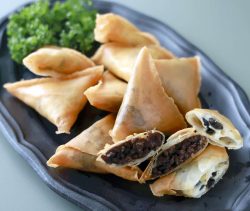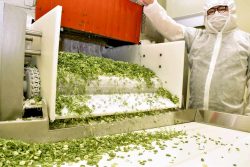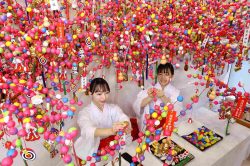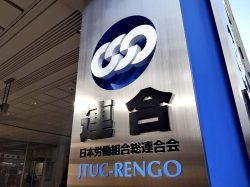Onigiri from Chiba Prefecture Commercially Available; Yokohama Company Begins Selling Gonju in Supermarkets

Mitsuhashi Inc.’s gonju onigiri rice balls
20:00 JST, June 9, 2024
TATEYAMA, Chiba — The city of Tateyama, Chiba Prefecture, is home to a treat known as gonju, an onigiri rice ball packed with ingredients such as sweet and spicy pork, fried tofu and dried bonito flakes.
Now, a major Yokohama-based rice wholesaler, Mitsuhashi Inc., has developed gonju into a commercial product for the mass market. The company began selling it this month, hoping to pass on the taste of local cuisine to the next generation.
The onigiri has been popular in and around Tateyama for many years. But with the shift to nuclear families and the diversification of diets, people are eating it less and less.
The aroma of bonito wafted through the air as I took a bite of the light brown onigiri. The sweet and spicy seasoning whetted my appetite, and the umami from the fried tofu and pork belly complemented the rice nicely.
In the past, gonju was enjoyed all around the southern part of the Boso Peninsula, where Tateyama is located. People supposedly used to eat the rice ball in the 10th month of the lunar calendar, to pray for safety on their way to the Izumo Taisha Grand Shrine in Shimane Prefecture.
The rice balls are still served at the Yawatanmachi festival, a major celebration held in Tateyama’s Tsurugaya Hachimangu shrine.
Gonju is made with ingredients that have been thoroughly cooked, thus preventing food poisoning even during the lingering summer heat.
“Unlike namero [raw fish pounded with miso, and herbs and spices], gonju is rarely offered at restaurants or retail stores,” a Tateyama city official said. “It has been popular as a home-cooked meal since long ago, but I think these days there are fewer and fewer people who know how to make it.”
As for how Mitsuhashi’s focus came to be directed toward gonju: “We were aiming to develop a product that would both increase rice consumption and pass on local cuisine. Gonju was perfect for that purpose,” said employee Atsushi Koyata.
The Tateyama city government introduced Mitsuhashi to Michie Hasegawa, 77, a housewife who lives in the city, to learn the recipe for gonju.
The company had a hard time reproducing the taste of her home cooking, but after about six months of repeated tastings, it managed to produce a commercially viable version of the rice balls in March.
“The appeal of gonju comes from the flavor of the dried bonito flakes and the juiciness of the pork. We have devised ways to better preserve the product without losing its flavor,” Koyata said.
The company plans for gonju to be just the first in a series of local dishes which it will develop commercially.
Koyata emphasized that Mitsuhashi “wants to recreate cuisines from various regions to pass on the flavors of local delicacies to the next generation.”
The company’s gonju onigiri are now available at supermarkets in the Kanto region.
"Features" POPULAR ARTICLE
-

Sanrio to Open Museum in Yamanashi Pref. Dedicated to Founder, Exhibits Include Hello Kitty, Other Characters
-
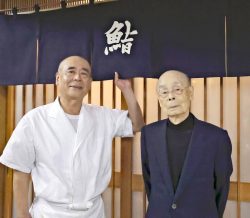
Legendary Sushi Chef Jiro Ono Turns 100: ‘I Have No Regrets’
-
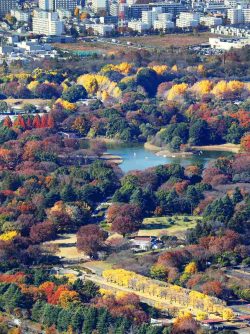
Autumn Foliage Surrounds Visitors to Tokyo’s Showa Kinen Park
-

My Daughter No Longer Speaks to Me, But I Want to See Her and My Grandchild
-

Kumamoto: Public Bath Refurbished as Library Where You Can Chat, Take Photos
JN ACCESS RANKING
-

Keidanren Chairman Yoshinobu Tsutsui Visits Kashiwazaki-Kariwa Nuclear Power Plant; Inspects New Emergency Safety System
-
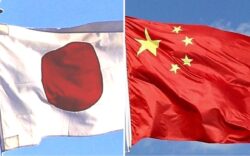
Imports of Rare Earths from China Facing Delays, May Be Caused by Deterioration of Japan-China Relations
-

University of Tokyo Professor Discusses Japanese Economic Security in Interview Ahead of Forum
-

Japan Pulls out of Vietnam Nuclear Project, Complicating Hanoi’s Power Plans
-

Govt Aims to Expand NISA Program Lineup, Abolish Age Restriction


